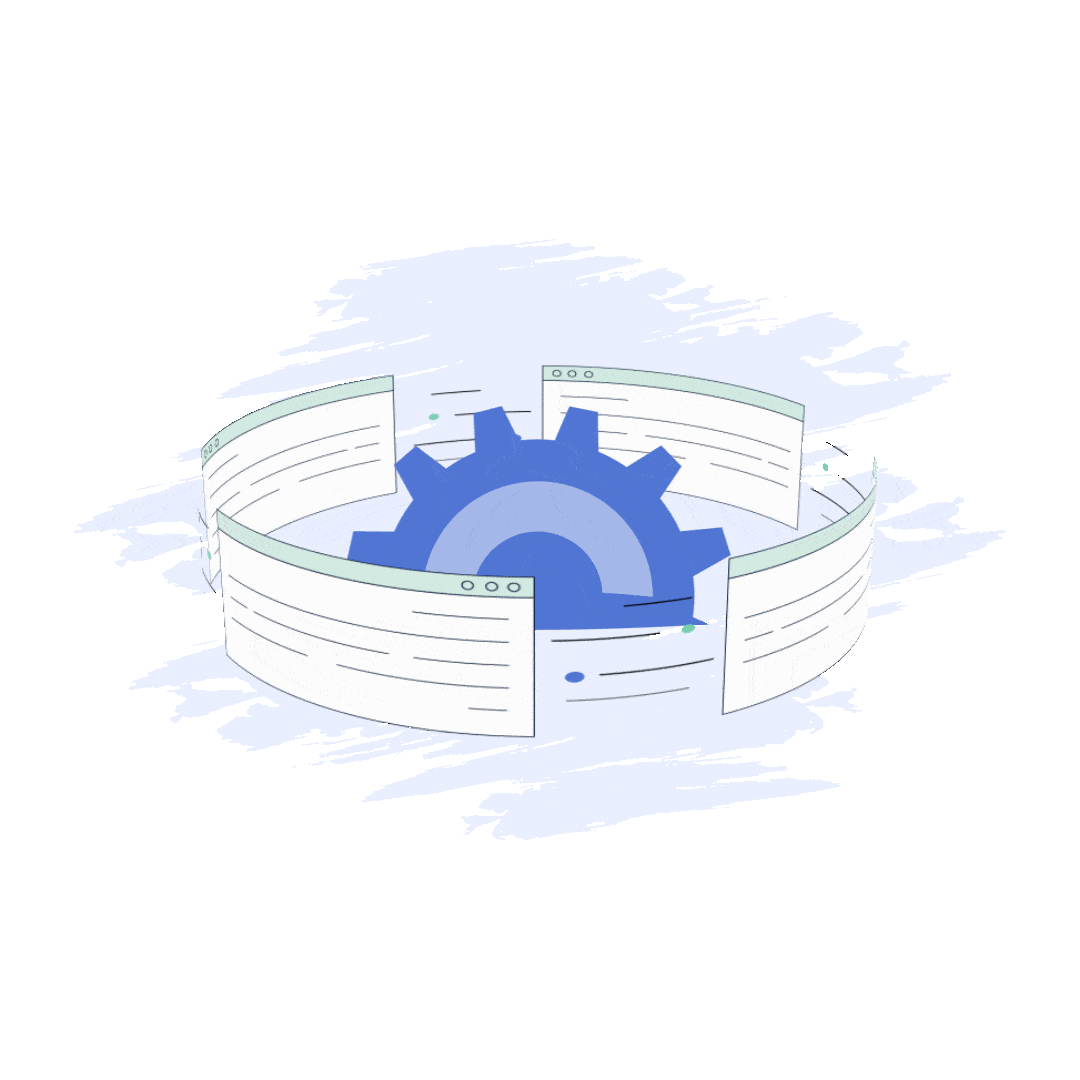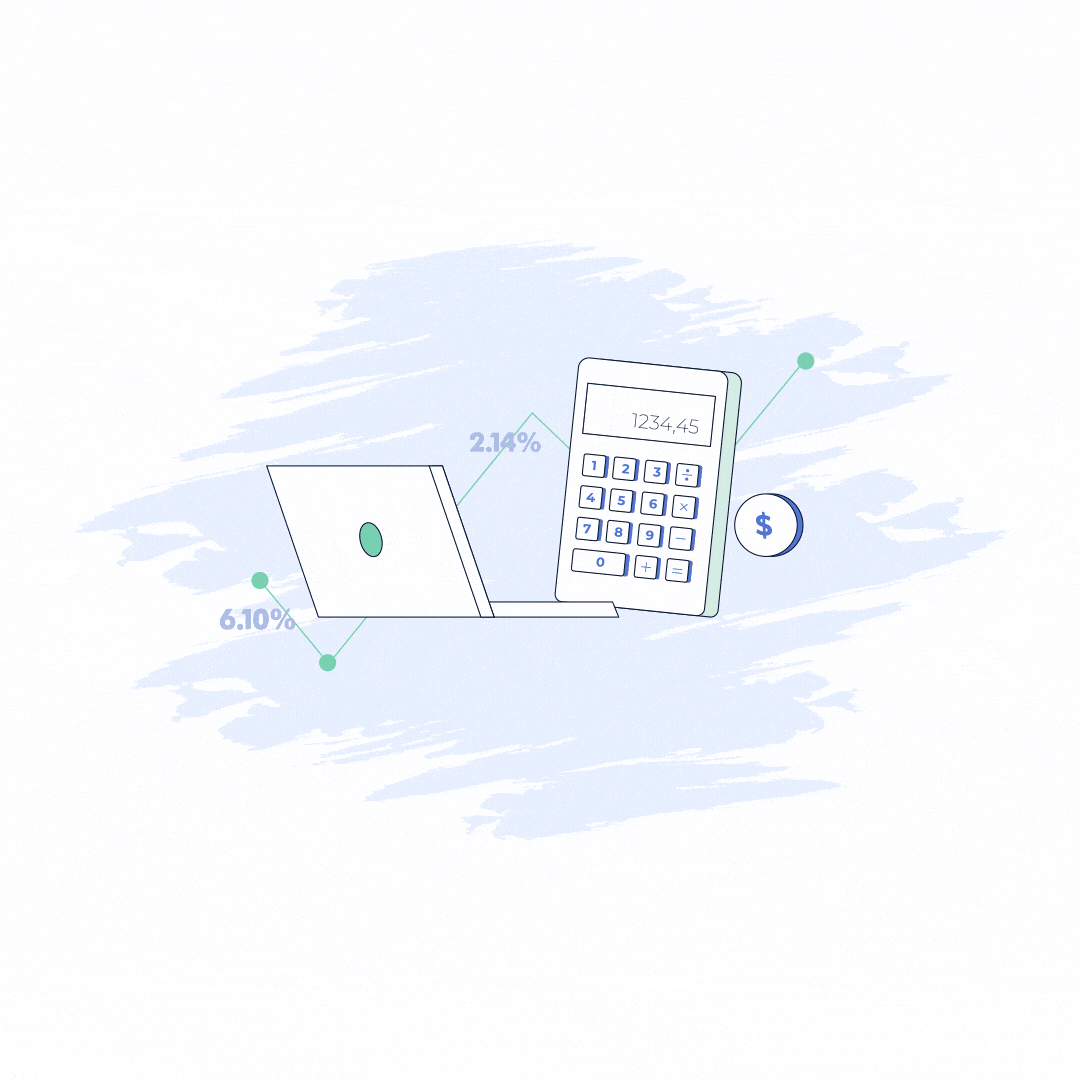Why Zamp?
Combining technology and help from sales tax experts is a game changer.
We do the heavy lifting, so you don’t have to.

Fully Managed Solution
Stressing over sales tax is a thing of the past. All you do is click approve, and we handle the rest. You'll always be up-to-date and sales tax compliant.

Developer Friendly Sales Tax API
Connect your existing e-commerce, marketplace & ERP systems within minutes, and use Zamp’s API for roof-top accurate sales tax calculations.

One Price
One simple price that scales with your business. No overages, no hidden fees, no surprises.
Shopify Sales Tax Automation
Today we're diving into the world of Shopify sales tax automation. Sales tax can be quite detailed, but the sales tax professionals at Zamp are on a mission to make the process as smooth as possible for you.
Understanding the Complexity of Sales Tax in E-Commerce
E-commerce, and Shopify in particular, have significantly altered the landscape of retail and business operations. This shift brings a challenging aspect to the forefront: managing sales tax in a landscape that stretches across various regions and jurisdictions. In the world of online sales, transactions are not confined to a single location. As a result, business owners must navigate a web of sales tax regulations that differ from one state to another, and from city to city.
Each region comes with its unique set of rules and rates for sales tax. For instance, what is taxable in one state might be exempt in another. Some jurisdictions require tax on shipping and handling, while others do not. This level of complexity requires Shopify store owners to be extremely vigilant and informed about the specific tax obligations in each area where their customers are located.
Why Accurate Sales Tax Management Matters for Your Shopify Store
For Shopify store owners, managing sales tax is far more than just a legal requirement. It's a critical aspect of customer relations and business credibility. Accurate sales tax management is the cornerstone of establishing and maintaining trust with your customers. When sales tax is handled correctly, customers are charged the right amount on their purchases, reflecting a business's commitment to fairness and legal compliance.
Conversely, inaccuracies in sales tax—whether overcharging or undercharging—can have adverse effects. Overcharging may lead to customer dissatisfaction and disputes, while undercharging can result in a sales tax audit as well as significant financial penalties from tax authorities. Both scenarios can harm the reputation of a business, and in the long term, impact its profitability and viability.
Introducing Sales Tax Automation for Shopify Stores
This is where the concept of an automated sales tax solution becomes invaluable for online businesses and Shopify store owners. Sales tax automation serves as an efficient tool, handling the complexities of sales tax calculations and compliance. It's designed to seamlessly integrate with your Shopify store, taking over the task of determining the accurate sales tax for each transaction.
Sales tax automation is essentially a sophisticated software system that connects with your Shopify platform. It calculates the correct sales tax for every sale you make. The system considers the many factors that affect sales tax calculation, such as the type of product being sold, the location of the customer, and the ever-changing tax laws and rates. This automation ensures that every transaction is compliant with the specific tax laws applicable to that sale.
Sales tax software and automation tools are equipped with several features designed to simplify tax management for online businesses. They provide automatic calculation of sales tax, ensuring each transaction is taxed correctly according to the latest regulations. Additionally, these tools are regularly updated to reflect real-time changes in tax rates and laws, which is essential for maintaining compliance in a landscape where tax regulations are constantly evolving. Furthermore, they are designed to manage sales tax obligations across multiple states, catering to businesses that serve a broad geographical customer base.
By incorporating sales tax software automation into your Shopify store, you ensure that your sales tax calculations are both accurate and efficient. This integration eliminates the need for manual tax calculations for each transaction, significantly reducing the likelihood of errors. With the confidence that you’ve added sales tax to your Shopify store correctly and that your sales tax management is precise and up-to-date, you can focus more on other crucial aspects of your business, such as product development, customer service, and marketing.
Sales tax automation not only streamlines your operational processes but also provides peace of mind knowing that your business is compliant with diverse and ever-changing tax laws.
Book a call today
We'll answer all of your sales tax questions & address any of your concerns to ensure that you never have to worry about sales tax again-
1Book a free 30 minute call
-
2Meet with one of our experts
-
3Get sales tax off your plate
Real-World Success with Shopify Sales Tax Automation
Gravity Grabber stands out as a Shopify sales tax automation success story, showcasing the transformative impact of Zamp's sales tax automation for e-commerce,. Gravity Grabber is on a mission to provide outdoor sports enthusiasts with a reliable solution for storing ski and snowboarding equipment. However, as a rapidly growing company, they faced the daunting task of managing sales tax complexities. With a small team and expanding reach across multiple states, the burden of sales tax compliance became increasingly heavy.
Gravity Grabber turned to Zamp’s Shopify sales tax automation solution. This gave the team what they desperately needed: freedom from the time-consuming tasks of sales tax management. This shift allowed Hogan DeSpain, VP of Marketing at Gravity Grabber, to redirect his focus towards vital business operations like marketing and product development.
Key Benefits of Zamp’s Sales Tax Automation
- Time Savings: The most significant benefit was the elimination of time spent on sales tax. With Zamp, the cumbersome process of registration, monitoring liabilities, and dealing with sales tax was entirely taken off Gravity Grabber's plate.
- Expert Support: Zamp also provided a responsive and proactive support team, accessible for any queries, ensuring peace of mind for Gravity Grabber.
- Simplified Onboarding and Implementation: The transition to Zamp was seamless, characterized by effortless onboarding and straightforward integration with Amazon and Shopify, making the setup process efficient and stress-free.
The outcomes of adopting Zamp for Gravity Grabber have been noteworthy. The company resolved previous sales tax liabilities, successfully completed multiple state registrations and filings, and most importantly, reclaimed over 10 hours each month - time that is now invested back into the business. With the sales tax burden lifted, Gravity Grabber can focus on what they do best: growing their business and innovating in their niche.
How to Implement Sales Tax Automation in Your Shopify Store
Now, how do you get this up and running in your Shopify store? It's simpler than you might think. We'll guide you through setting it up, maintaining accuracy, and ensuring compliance.
Zamp offers a fully managed sales tax solution for your Shopify store, enhanced by a team with deep expertise in all facets of sales tax management, from research and calculations to filing and remittance. Additionally, Zamp's integration with Shopify allows for the analysis of transaction data and the creation of summary reports by state.
For accurate tax calculation within Shopify, Zamp recommends using Shopify's own tax engine. To help with this, Shopify's Help Center and Zamp's resources provide guidance on understanding tax liability, nexus, and registrations. Once the necessary sales tax collection is determined, Shopify offers a guide on setting up U.S. taxes, supplemented by Zamp’s documentation and the assistance of Zamp’s dedicated Onboarding & Account managers.
Integrating Zamp with a Shopify store is a straightforward process, requiring the store's URL, an Admin API access token, and the API secret key. Zamp’s team assists in setting up the necessary API scopes and permissions and ensures that historical transactions are backfilled for an accurate nexus analysis.
Once integrated, Zamp's software starts compiling state summary reports. These reports are crucial for informing store owners of their liabilities in each state and are used by Zamp to handle filing and remittance. Store owners are given prior notice of upcoming filings and liabilities, allowing time for reconciliation before Zamp’s filing team completes the process.
For Shopify sellers looking for clarity and ease in managing sales tax, Zamp offers a solution that not only simplifies but also comprehensively manages the sales tax process, from calculation to filing.
The Future of Sales Tax Automation in E-Commerce
If you're running a Shopify store, embracing sales tax automation isn't just a good idea; it's a strategic move for the future. It's about staying compliant, efficient, and ahead in a dynamic online marketplace.If you’re ready to take the next step towards hassle-free sales tax management for your Shopify store, get in touch with the team at Zamp and set up a software demo. With sales tax automation, you're not just complying with tax laws; you're setting your business up for success. Let's make sales tax one less thing to worry about in your e-commerce journey.
Book a call today
We'll answer all of your sales tax questions & address any of your concerns to ensure that you never have to worry about sales tax again-
1Book a free 30 minute call
-
2Meet with one of our experts
-
3Get sales tax off your plate
Sales tax automation in Shopify stores primarily serves to calculate and apply the correct sales tax for each transaction. It takes into account factors like product type, customer location, and current tax laws, ensuring compliance with diverse and changing tax regulations.
Integrating sales tax automation benefits Shopify store owners by ensuring accuracy and efficiency in tax calculations, eliminating manual efforts, reducing the likelihood of errors, and allowing owners to focus on other critical business aspects like product development and customer service.
Zamp's sales tax automation software addresses challenges such as managing the complexities of sales tax across multiple states, reducing the time spent on sales tax processes, providing expert support for queries, and simplifying the onboarding and integration process with Shopify and other platforms.
Integrating Zamp with a Shopify store involves providing Zamp with the store's URL, an Admin API access token, and the API secret key. Zamp's team assists in setting up the necessary API scopes and permissions and ensures historical transactions are accounted for accurate nexus analysis.
Embracing sales tax automation positions Shopify store owners for a future of enhanced compliance, operational efficiency, and competitiveness in the dynamic online marketplace. It simplifies sales tax management, enabling store owners to focus on business growth and success.
Book a call today
We'll answer all of your sales tax questions & address any of your concerns to ensure that you never have to worry about sales tax again-
1Book a free 30 minute call
-
2Meet with one of our experts
-
3Get sales tax off your plate


